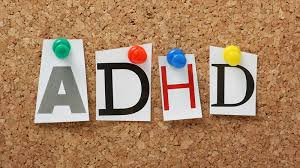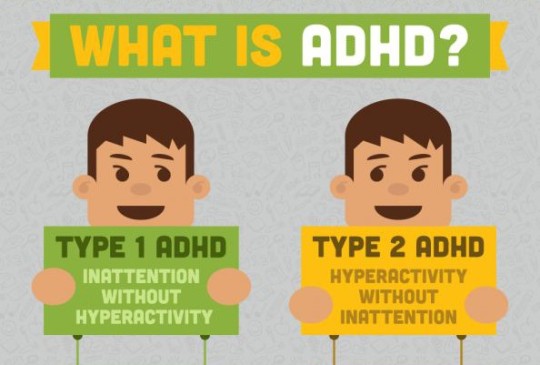Do you know what ADHD type 2 is? If not, you’re not alone. This is a relatively new term that is used to describe adults who have difficulty with focus and organization. Unlike ADHD type 1 (which is more commonly diagnosed in children), ADHD type 2 does not include hyperactivity or impulsiveness. If you are an adult who has been struggling with focus and organization, you may want to consider getting evaluated for ADHD type 2. In this blog post, we will discuss the symptoms of ADHD type 2 and how it is treated.
Contents
What Is ADHD Type 2?
 ADHD type 2 is a form of attention deficit hyperactivity disorder (ADHD) that’s characterized by inattentiveness and impulsivity, but not necessarily hyperactivity. Like other forms of ADHD, type two can make it difficult to focus, follow through on tasks, and control impulses. And while people with this type of ADHD may not be constantly moving, they may still have trouble sitting still for long periods.
ADHD type 2 is a form of attention deficit hyperactivity disorder (ADHD) that’s characterized by inattentiveness and impulsivity, but not necessarily hyperactivity. Like other forms of ADHD, type two can make it difficult to focus, follow through on tasks, and control impulses. And while people with this type of ADHD may not be constantly moving, they may still have trouble sitting still for long periods.
ADHD type 2 is sometimes called “slow-moving ADHD” because it can be harder to spot than other types. And while it’s not as well-known, type two ADHD is just as real and can be just as impairing. If you have type two ADHD, you may feel like you’re always running late, forgetting important details, or making impulsive decisions.
Symptoms
There are several symptoms of ADHD type 2 that are different from those of type one. For example, people with ADHD type two tend to have problems with:
Inattention
This symptom is characterized by difficulty sustaining attention on tasks or activities. People with ADHD type two may also have trouble following through on instructions, completing tasks, or organizing their thoughts.
Hyperactivity
This symptom is characterized by excess energy, restlessness, and an inability to sit still for long periods. People with ADHD type two may also fidget or talk excessively.
Impulsivity
This symptom is characterized by a tendency to act without thinking things through or considering the consequences. People with ADHD type two may also have trouble waiting their turn or controlling their emotions.
While the symptoms of ADHD type two may seem similar to those of type one, there are some important differences. For example, people with ADHD type two tend to be less disruptive and more able to focus on tasks than those with ADHD type one. Additionally, the symptoms of ADHD type 2 tend to persist into adulthood, while the symptoms of ADHD type one often lessen with age.
If you think you or someone you know may have ADHD type two, it is important to speak with a doctor or mental health professional for an accurate diagnosis.
What Are The Causes Of ADHD Type 2?
There’s no one answer to this question as the causes of ADHD type two can vary from person to person. However, some possible causes could include:
Genetics
One of the most likely causes of ADHD type 2 is genetics. This means that if you have a family member with ADHD, you’re more likely to develop it yourself. In fact, studies have shown that children with an affected parent are up to eight times more likely to develop ADHD than those without a family history of the disorder.
Brain Injury
The second type of ADHD is caused by brain injury. This can be from a traumatic event, such as a car accident, or a non-traumatic event, such as a stroke. For example, a person with a history of brain injury may have problems with impulsivity, hyperactivity, and/or inattention.
While the exact cause of ADHD type two is not known, it is thought to be due to damage to the frontal lobe of the brain. This area of the brain is responsible for executive functioning, which includes planning, organization, and self-control. Additionally, it’s worth noting that ADHD type two is more common in males than females by about three to one.
Treatment Options For ADHD Type 2
 There are several treatment options available for people with ADHD type II. Some people may require medication to help control their symptoms, while others may benefit from behavioral therapy or other types of counseling. It is important to work with a qualified mental health professional to determine the best course of treatment for your individual needs. Let’s discuss all treatment options below:
There are several treatment options available for people with ADHD type II. Some people may require medication to help control their symptoms, while others may benefit from behavioral therapy or other types of counseling. It is important to work with a qualified mental health professional to determine the best course of treatment for your individual needs. Let’s discuss all treatment options below:
Medicines
Stimulants are the most commonly prescribed medicines for ADHD type 2. They help people with ADHD type 2 focus their thoughts and improve their ability to control impulsive behavior.
Non-stimulant medicines can also be effective in treating it. These include antidepressants, anti-anxiety medicines, and blood pressure medications.
Behavioral therapies
Behavioral therapies can help people with ADHD learn to manage their symptoms. These therapies often involve teaching new skills, such as how to plan and organize tasks, control impulsive behavior, and cope with frustration.
Parent training and education
There are several parent training and education programs available to help parents of children with ADHD type II. These programs can provide parents with the skills and knowledge they need to effectively manage their child’s condition.
Social skills training
One of the most effective treatments for ADHD type II is social skills training. This type of therapy can help people with ADHD learn how to interact with others, communicate effectively, and develop healthy relationships.
Cognitive-behavioral therapy
Cognitive-behavioral therapy (CBT) is another effective treatment for ADHD type 2. CBT can help people with ADHD learn to manage their symptoms and develop healthy coping mechanisms. CBT is typically delivered in weekly sessions, lasting 60-90 minutes each. Many people with ADHD type two notice significant improvements after just a few weeks of treatment.
Psychotherapy
Psychotherapy can help people with ADHD type II understand and manage their emotions. This type of therapy can be particularly helpful in addressing issues such as anxiety or depression that may be associated with ADHD. It can also help people develop coping mechanisms for dealing with the challenges of ADHD.
While there is no cure for ADHD type II, proper treatment can help people manage their symptoms and lead successful and fulfilling lives. If you think you or someone you know may have ADHD, it is important to seek professional help. A qualified mental health professional can assess for ADHD and other potential causes of symptoms.
What Are Some Self-Help Tips?
There are a lot of different ways to manage ADHD type II, and it depends on what works best for you. However, there are a few self-help tips that can help you get started.
- First, try to find a routine that works for you and stick to it. This may involve setting alarms or reminders on your phone or keeping a planner with you at all times.
- Second, try to break down tasks into smaller, more manageable chunks. This will help you avoid feeling overwhelmed and make it easier to stay on track.
- Third, make sure to take breaks throughout the day, especially if you feel yourself getting overwhelmed or frustrated. Taking a few minutes to yourself can help you reset and refocus.
- Lastly, don’t be afraid to ask for help when you need it. There is no shame in admitting that you need assistance, and there are plenty of people who are more than happy to help. Whether it’s a friend, family member, or professional, reach out when you need support.
ADHD type II can be challenging, but it doesn’t have to be impossible to manage. By following these self-help tips, you can start taking steps towards a more successful and productive life.
Conclusion
It may be concluded that ADHD Type 2 is a real and valid condition that needs to be taken seriously. It is important to remember that each person experiences ADHD differently, so it is important to get an individualized assessment and treatment plan. If you think you or your child may have ADHD Type II, talk to a qualified mental health professional.
For further information and suggestions, please contact Therapy Mantra. We have a team of expert therapists and psychiatrists that can help you overcome this problem. Get in touch with us right away to learn more about our services. You may also make an online therapy session or download our free Android or iOS app.


